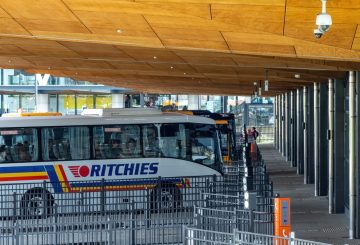뉴질랜드의 크리켓 팬들은 최근 크라이스트처치에서 열린 호주와의 테스트에서 패한 것에 여전히 열광하고 있을지도 모릅니다.하지만 정확히 50년 전 뉴질랜드가 같은 도시에서 라이벌들을 상대로 역사적인 승리를 거뒀다는 사실을 기억할 필요가 있습니다.뉴질랜드가 테스트 경기에서 호주를 꺾은 것은 이번이 처음이었습니다.
경기는 화창한 날 랭커스터 파크에서 열렸습니다.뉴질랜드의 위켓 키퍼인 켄 워즈워스 (Ken Wadsworth) 가 4타를 쳐 승리를 거두며 열광적인 축하를 자아냈습니다.경기장의 반대편에서 뉴질랜드의 오프너 글렌 터너는 2세기에 걸친 시험을 통과하지 못했습니다.그의 101점과 110점 미아웃은 이 경기에서 가장 높은 점수를 기록했습니다.
현재 76세인 터너는 겸손한 표정으로 행사를 되돌아보며 축하할 사람이 아니라고 말했습니다.그는 승리를 ‘사무실에서 보내는 또 다른 하루’에 비유했습니다.하지만 1974년 3월 13일 마지막 이닝에서 228타점을 몰아쳐 승리를 거두는 뉴질랜드를 지켜본 수천 명의 팬들에게는 이 승리가 의미심장했습니다.
터너는 볼링 선수에게 유리한 투구 때문에 득점이 낮은 경기에서 11시간 이상 뛰었고 600개 이상의 공을 상대했습니다.그럼에도 불구하고 그는 위켓을 다섯 개나 얻어내며 끝까지 편안하게 마무리할 수 있었습니다.
뉴질랜드는 호주를 상대로 테스트 우승을 차지한 흔치 않습니다. 지난 31년 동안 단 한 번의 승리에 그쳤습니다.1974년에는 호주를 상대로 테스트를 치르는 것조차 큰 일이었습니다.그해 여름까지만 해도 두 나라는 1945/6년에 딱 한 번 경기를 치렀는데, 결국 뉴질랜드는 큰 패배로 끝났습니다.
크라이스트처치에서 터너와 함께 타격전을 시작했던 존 파커 (John Parker) 는 호주가 뉴질랜드가 테스트 경기를 치르기에 충분히 중요하다고 생각하지 않았던 것을 회상한다.이러한 존중의 부족은 뉴질랜드 팀에 동기부여가 된 요인이었습니다.
이 승리는 터너의 개인적인 승리이기도 했습니다. 터너는 마지막 날 호주 주장 이안 차펠로부터 폭언을 당했습니다.그럼에도 터너는 냉정함을 유지하며 뉴질랜드를 승리로 이끌었습니다.
7위켓을 획득한 젊은 리처드 해들리가 이끄는 이 우승은 뉴질랜드 크리켓의 새 시대를 열었습니다.이 승리는 영연방 대회 개최를 기념하던 크라이스트처치의 역사에 한 획을 그었다.
많은 축하에도 불구하고 선수들은 쉴 시간이 거의 없었다.그들은 모두 그날 밤 크라이스트처치를 떠나 다음 날 일터로 돌아갔습니다.
1993년 오클랜드 에덴 파크 (Eden Park) 에서 우승한 이후 뉴질랜드는 2011년 호바트에서 호주를 상대로 단 한 번의 테스트에서 우승했습니다.



























































